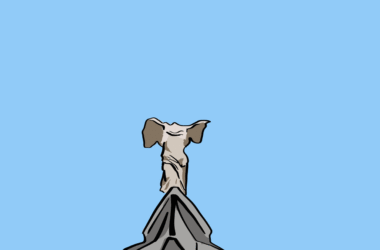Despite strong attendance numbers at numerous McGill athletic events this year, some students have recently expressed concerns about McGill Athletics and Recreation’s promotion strategies. They are primarily concerned with Athletics’ promotion of the events surrounding the actual games and with its efforts to work with student groups in promoting events.
Students’ Society VP Internal Tom Fabian—who has been heavily involved in promoting athletic events at McGill as the former president of the Varsity Council, Athletics representative at SSMU Council, and co-creator of Red Thunder—said he has been concerned about this for several years. In talking with different coaches, Fabian said that the teams are frustrated as well.
“I’ve talked to numerous people about this—on how [Athletics] goes about promoting—and it’s very frustrating,” he said.
Emilie Leonard, Athletics representative to SSMU, said the main problem is a lack of communication between McGill and students. She said that although the promotional employees work full-time, they still might be “out of touch with how to connect with the average student.”
“I think they have some good ideas, but there’s the potential for so many better ideas within the student population,” Leonard said. “And when they do have these ideas, just asking one or two people how to carry them out would make them so much better.”
However, Jill Barker, manager of marketing and communications at McGill Athletics and Recreation, said her department has actually been pleased with the attendance numbers at most sporting events. Men’s and women’s basketball attendance has jumped 76 per cent from last year, and Redmen football had twice as many attendees as last year.
“We actually think that we’re doing a pretty good job of promoting the games,” Barker said. “Pack the House, Fill the Stadium, and Fill the Arena have all been very successful events.”
Barker also said that Athletics has actively tried to work with students and student groups to plan events. For example, they have increased their use of social media—Facebook, Twitter, and YouTube—in promotions to try to create a “total fan atmosphere from door to door.”
“We’d be silly if we didn’t work through students, and we do it all the time,” she said.
Both Fabian and Leonard, however, pointed to the Coors Light After Party which followed the inaugural Pack the House basketball games on February 4 as one of the problematic events. The party was very poorly attended and considered by some involved to be a bust.
“There were a few issues that came up [with the Coors Light After Party],” Fabian said. “There have been certain student groups that have tried to do parties like this, but have been turned down, and then [Athletics] come up with this.”
Barker explained that Molson, McGill Athletics’s sponsor, proposed the party, and that it wasn’t a typical event for the department. She added that the party was actually promoted as heavily as the Pack the House event itself and that “we were surprised when we packed the house but the house just left after the game.”
According to Leonard, a number of the issues stemming from the party could have been addressed had more students been consulted during the planning and promotional process of the event.
“You can’t try something out like that without putting all your effort into it and without trying to make it as good as it can be,” she said. “And the fact that they only started promoting two weeks beforehand—I found out at an advisory board meeting a month before it was supposed to happen, or three weeks, and I couldn’t believe it. This should have been talked about in January.”
In addition, both Fabian and Leonard said that they were concerned that Athletics spent nearly $5,000 on the Coors Light event when it did not attract many students.
“They’re not connected as much as the students, so when they try to promote events, they don’t really know how to make it hip, or the ‘in’ thing to do,” Fabian said. “They think it’s the ‘in’ thing to do, but they come off as your mom trying to promote an event.”
Barker, for her part, said Athletics is always trying new initiatives to create a better fan experience, but that they will not necessarily all be resoundingly successful.
“We broke even on the money spent [on the Coors Light After Party],” Barker said. “We don’t have a great venue to host that kind of stuff. We really didn’t know how it would go or not go, but we took a chance.”
Another Athletics-hosted event that failed to attract significant turnout was the Martlet’s hockey “Code Red” game, held on February 19—the first Saturday of Reading Week. As with some previous events, Athletics created a Facebook event page, but seemed unable to generate any serious buzz for the event—nine people were listed on the event page as “attending,” 15 as “maybe attending,” 72 as “not attending,” and 293 as “awaiting reply.”
“It was just a regular turnout,” said Jordanna Peroff, a forward on the team. “Parents were there, [but] I didn’t notice anyone’s friends there—I’m assuming they were [away] on Reading Week.”
Fabian suggested part of the solution for creating better events in the future might be as simple as working “more closely with Red Thunder and other student groups.”
“I understand that there’s difficulties with regards to the culture at McGill,” he said. “Not everybody’s into it, but you have to try new things.”
Leonard said she has also been working to get different students groups under the same umbrella so they can more readily work together with Athletics.
“I think the people higher up should wake up to this group of students who are ready to promote and ready to help out, and that we all need to work together and discuss good ideas,” she said.
While there have been strong improvements in overall attendance numbers, Barker acknowledged there is more work that could be done, but noted that this is no simple task at McGill.
“On a Tuesday night during midterms, you could offer a free car and you wouldn’t get people out to a game,” Barker said. “So we have to be very respectful of what people’s job is at McGill; it is to be successful in school as well. So we know that sometimes it’s just difficult to get students out.”





